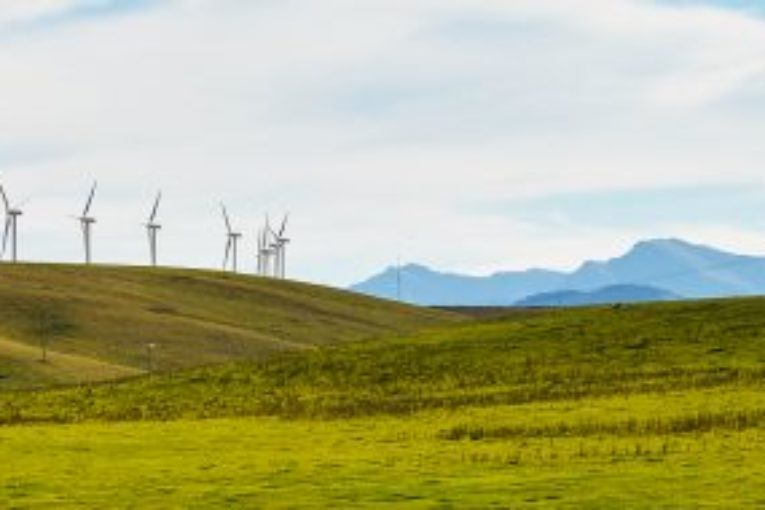
Western Canada has broken new ground for renewable energy with landmark procurement projects for wind in Alberta this past year. This has the potential to fundamentally change the Alberta energy sector in a greener, more sustainable direction. To learn more about the significance of what has changed, we sat down with Evan Wilson, CanWEA’s Regional Director for the Prairies.
What policies and systems exist in Alberta that made affordable wind energy a reality and what could other parts of Canada learn from their example?
Three things come into play that make wind energy a low cost reality here in Alberta and in Saskatchewan:
Firstly, Alberta and Saskatchewan share the best wind resource in Canada — you can capture capacity factors in the 40% range because of stronger and more consistent winds, so you can pull energy out of the wind a lot more efficiently than you can than in other parts of Canada.
Second, As far as technological improvements go, wind turbines are getting bigger. With higher turbine heights, we are able to reach more consistent wind patterns. It also means you can use longer blades that can pull more kinetic energy out of the wind. Ultimately, today’s wind turbines operate more efficiently and generate more electricity.
Finally, over the last nine years, we’ve seen around a 67% drop in the cost of generating wind electricity. Now you can really generate a megawatt hour very affordably. Here in Alberta, the Renewable Energy Program (REP) has also really helped; it uses what we call index-renewable energy credits (IRECs) that provide a guaranteed, predictable revenue stream. When the wholesale price of electricity is below the contracted wind price, companies are paid the difference using IRECs. When it’s above the contracted price, perhaps driven higher by volatile natural gas prices or carbon charges on fossil fuels, wind producers pay the difference back. We found it really incentivises companies to bid the lowest cost of electricity possible and those savings are passed on to Albertans. Basically, if you set up a competitive program where people are putting in their lowest cost bids, you’re going to see low-cost power.
How does having wind energy as the lowest-cost option for energy change the political atmosphere around renewable energy?
As far as Alberta goes, we now have an example in the real world of how much it costs to produce wind energy in Canada. Before, we were having to look at other jurisdictions and they were either higher than what we could get here, or much lower, like in the case of the U.S., where different policy structures create different incentives for renewable energy producers. We can now show what it actually costs to generate in Alberta and can move beyond comparisons to other places and can point to the average cost of 3.7 cents per kilowatt hour. From here, we can move the discussion beyond just the price and talk about other value that wind energy provides in reducing pollution, diversifying the energy mix, decentralizing electricity supply and providing economic benefits to rural communities.
What does the growth of wind energy projects mean for job creation in Alberta, Saskatchewan and other Western provinces?
We can speak with some confidence on Alberta about this: The Delphi Group did a study of the wind energy sector supply chain here that projects the number of jobs that will be the result of the REP. Based on interviews with various stakeholders and given the falling prices of wind energy, the study concluded that 4,500 of the 5,000 megawatt procurement would likely be awarded to wind. If that bears out, we are looking at up to almost 15,000 person-years of employment by 2030 (person-year = 1 job per 1 person per year). In financial terms, we’re looking at over $8 billion in investment on these projects, $3.7 billion of that in local investment, by 2030. There’s also a real opportunity to support communities and landowners in the province: these wind projects have the potential to bring in $25.5 million in property taxes for small communities and $13.5 million in land lease payments.
There is a lot of excitement surrounding Calgary being the host for this year’s CanWEA conference. What does the city have going for it that makes it the ideal venue for the conference and what potential does it have to be an urban leader in renewable energy?
Calgary is the energy capital of Canada. Wind energy is mainstream now and part of the Canadian energy industry as a low-cost energy source. Alberta is home to the largest market for wind development and the largest new wind project will happen here. Not only that, but Calgary Economic Development estimates that 32.4% of Canada’s total installed wind generation capacity is operated by Calgary-based companies.
Alberta has announced two additional rounds of energy procurement projects this year. What is most exciting about these projects for you and CanWEA?
Round Two was just announced, which has a requirement for a 25% Indigenous equity component. The difference is that while Round One was based solely on lowest-cost bid, Round Two will require that an indigenous community, or a business 100%-owned by an indigenous community, have at least 25% equity in the project. Between Round Two and Round Three, this will create 700 megawatts of new wind energy for the province.
If you are interested in taking part in the future of wind energy in Canada, we invite to join Evan Wilson and other sector leaders at the CanWEA Annual Conference and Exhibition 2018, Canada’s largest wind energy conference, October 23-25, in Calgary.
REGISTER NOW
Prairies Regional Director at the Canadian Wind Energy Association
You can read more of the news on source



